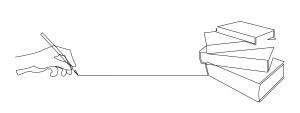In recent years, our field has seen a great increase in ‘one-pagers’: handy summaries of research topics and suggestions — complete with headings and friendly graphics.
Given their rising popularity, I thought it would be helpful to offer guidance on using them well.
So: what strategies will help you (and through you, your students) benefit the most from one pagers?
Strategy #1: Make Your Own
No, seriously.
The person who learns the most from a one-pager is the person who makes the one pager.
For instance: to make a 1-pager on retrieval practice, you first need to …
… learn a lot about retrieval practice;
… organize all your findings, preferably with lively and helpful graphics;
… understand its boundary conditions and best uses;
… summarize your findings in clear, consistent, understandable language;
… decide what information to include, and what to leave out…
In other words, you need to do all those generative learning activities that are most likely to ensure that you learn and remember new ideas. (Click here for a brisk review of the Ensers’ excellent book on generative learning.)
So, my most emphatic recommendation for 1-pagers: make ’em.
Strategy #2: Edit a 1-Pager
Let’s say I find a 1-pager on taking good classroom notes.
Because I know this research pool fairly well, I can both read the 1-pager and have a conversation with it.
That is: I can comment on the passages where I agree (“I’m so glad someone else has found this study helpful!”) and also note those passages where I don’t (“No, the Mueller and Oppenheimer study really does not support that claim.”).
I could re-prioritize its suggestions, reword a sentence or two, even sketch in a quick graphic that better encapsulates the ideas.
In effect, this editing strategy simply riffs on the first one above (“Make Your Own 1-Pager”). By collaborating or arguing with another 1-pager, I’m getting many of the same cognitive benefits.
Notice one key point here:
To succeed at strategies 1 and 2, I need to know a fair amount about the topic.
That is, relatively speaking I’m an expert.
If I were a novice on the topics of retrieval practice and note-taking, I couldn’t really create or respond to a 1-pager very substantively.
Strategy #3: Use a Single 1-Pager Intensively Over Time
A few recent books have focused on 1-pager summaries of cognitive science in the classroom.
For instance, consider Walkthrus by Tom Sherrington and Oliver Caviglioli. This book chooses several dozen specific classroom topics — cold calling, seating charts — and offers precise 5-step guidelines for examining, honing, and reviewing our practice.
Each of these Walkthrus is, in effect, a 1-pager; each one invites us to spend several days steeping in its advice.
So, if you choose the Walkthru on … say … “scaffolding,” you’ll start by reviewing all five steps. Then you’ll focus on step one: “map out the components of a task”.
This step will take at least a day or two, and during those 48 hours you’ll spend a lot of time thinking about that step.
So too with step 2 (“provide supports at a detailed level”), and then again with step 3 (“provide supports at an overview level”).
As you can easily see, this strategy means you’ll spend a lot of time — days and days! — thinking about the information, ideas, and suggestions on this particular 1-pager. The result: you’ll learn a lot about this topic.
Notice the key here: focused work over time. We don’t get the benefit of walkthrus by reading Walkthrus. We get the benefit by choosing one of them and dwelling on it for meaningful periods of time.
Less Productive 1-pager Strategies
I’m offering the list above because I worry that the most common use of a 1-pager is also the least effective use.
Here’s the commom, ineffective use:
Step 1: I don’t know much about (for example) worked examples.
Step 2: I come across a 1-pager on worked examples.
Step 3: I read it, and think “wow, that makes so much sense!”
Step 4: I go on about my day.
This process creates the illusion of understanding; I believe that I have learned something about worked examples.
Alas, as we well know, learning almost never happens this way. I don’t learn about worked examples by reading a 1-pager about them, but by grappling substantively with the concept over time.
In other words, I fear a 1-pager paradox:
They DO benefit the people who create them (strategy #1);
They DO benefit people who already know a great deal about a topic (strategy #2);
They DO benefit novices who devote days to intensive study and practice (strategy #3);
But they DON’T benefit beginners who use them as their form invites us to use them: a quick read.
If teachers wants to learn about any meaningful educational topic (working memory, entry routines, growth mindset, turn-n-talk, spacing and interleaving) we can’t do so simply by reading a 1-pager. We have to read a book, attend a workshop, take a class…and then think and practice and fail and start over.
We know that students learn by this interative process of engaging, grappling, struggling, and transforming. Teachers learn this way too.
Adam Boxer (on ex/Twitter @AdamBoxer1) is one of the few people who also worries about this trend in public. Here’s a brief recent thread.




